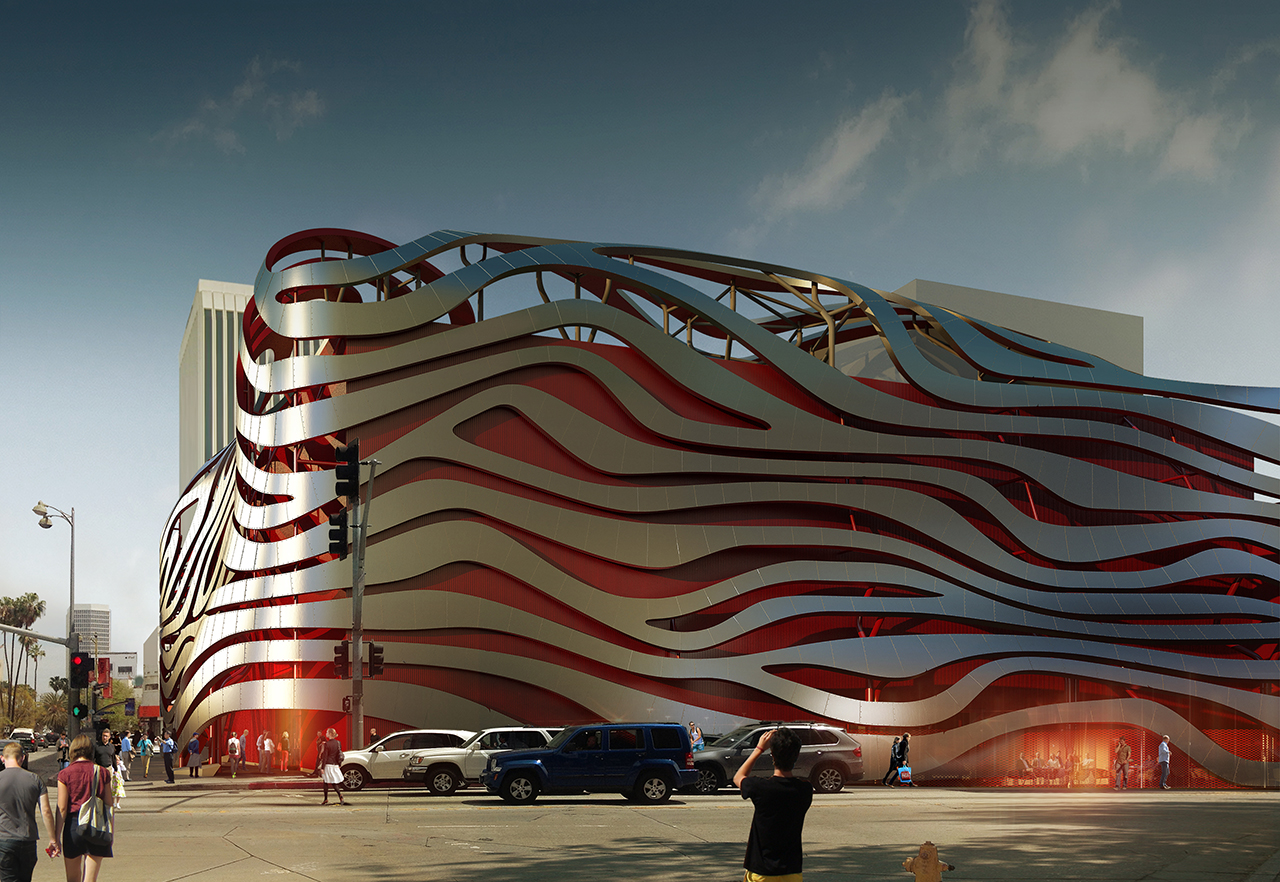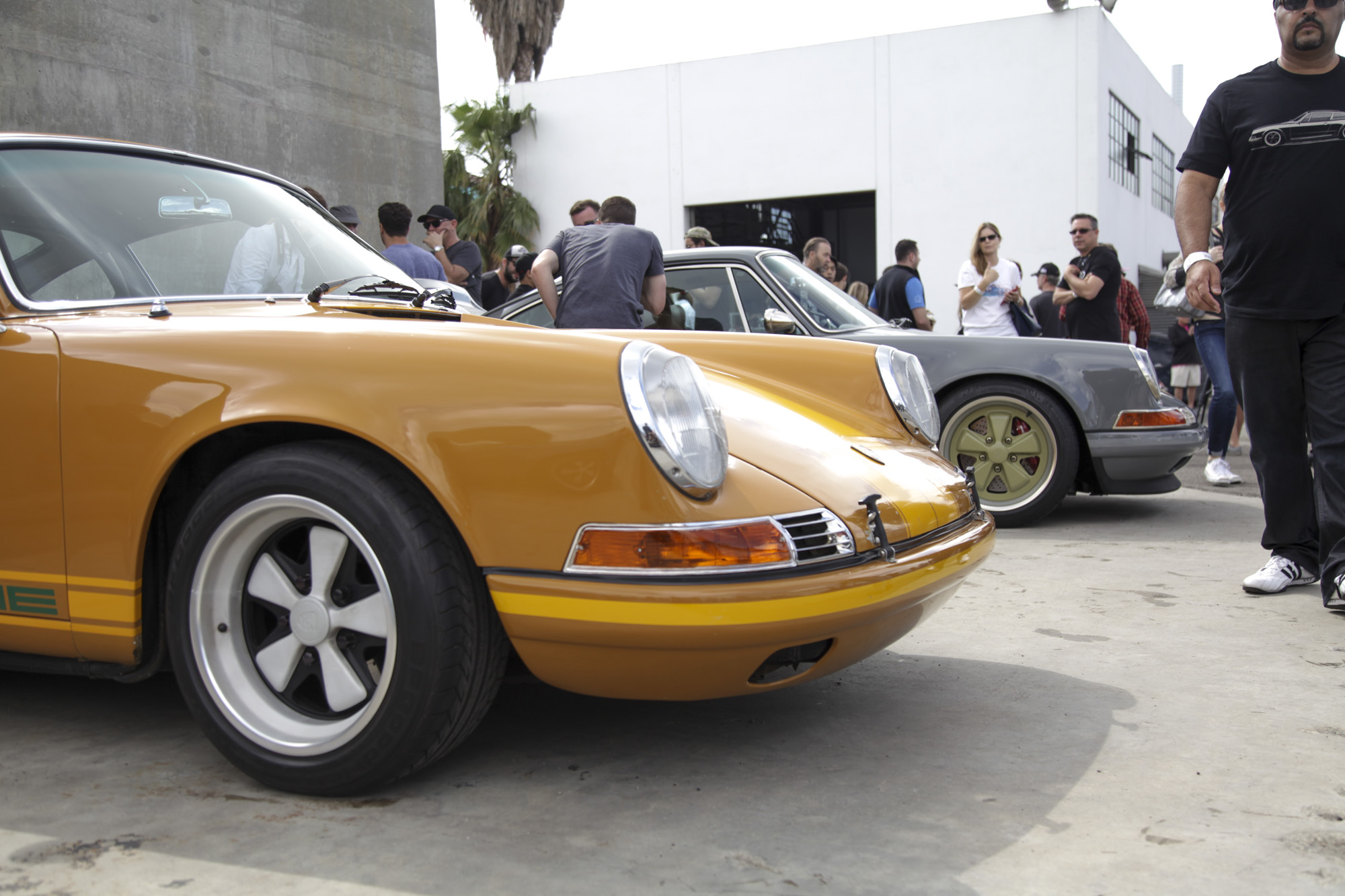
The Petersen Museum’s Grand Redesign
The Petersen Automotive Museum on Los Angeles’ Miracle Mile has, since the early 1990s, been a destination for automotive enthusiasts the world over, but despite being the home to an incredibly diverse and culturally significant collection of automobiles, it has always struggled with the physical limitations of the building in which it was located and the permanent installations that seemed cutting edge in 1994 seem dated and irrelevant in 2015. It is with this in mind that the Petersen’s board of directors and the executive director Terry Karges set themselves the task of turning the Petersen into a world class automotive museum. It’s not been an easy task, but thanks to the guidance of a strong board and a daring design by architects Trent Tesch and Gene Kohn of Kohn Pedersen Fox, the museum stands poised to meet its new brief when it opens this winter.

Originally founded in 1994 by publishing magnate Robert E. Petersen and his wife Margie, the Petersen initially occupied space in the Los Angeles Museum of Natural History before moving into its permanent location at 6060 Wilshire Blvd. The Wilshire Blvd building was designed by Welton Becket for the Japanese department store Seibu. Mr. Becket is perhaps best known for being the architect of the famous Beverly Hilton hotel in Beverly Hills and the Capitol Records building in Hollywood. Seibu had the distinction of being the first Japanese department store in the mainland United States, but their Miracle Mile store lasted only a scant two years, before closing due to lack of sales. Shortly after Seibu’s failure, the building was taken over by east coast department store chain Ohrbach’s. Ohrbach’s had originally leased several floors just a few blocks away on Wilshire Blvd in what was then known as the Prudential Insurance building, now known as Museum Square. Ohrbach’s operated in the building until 1986 when they shuttered all of their California stores. Sometime after, Robert and Margie Petersen purchased the building.
The building itself, despite being in an excellent location, was less than ideal for a museum. The structure was essentially a huge, dark gray box with very little in the way of exterior ornamentation that would distinguish it to passersby. Nor was the interior blessed with an overabundance of natural light and the layout and design of the building made changing exhibits a monumental task. What the building did have going for it though was an expansive underground parking facility that served perfectly as collection storage and maintenance space and as well as office space for the on-site staff. The Petersen soldiered on for many years in its initial configuration, but eventually members of the board of directors along with executive director Terry Karges felt that the time was right to bring the Petersen into the 21st century.
The grand redesign of the Petersen presented many unique challenges to any prospective architects. First, was budget. The museum simply didn’t have enough in the coffers to do a complete knockdown and rebuild. This meant working with the existing structure that had been set down by Welton Becket in the early 1960s. Secondly, Los Angeles’ Miracle Mile district is in the midst of something of a renaissance and any design for the exterior of the museum must remain fresh and interesting when juxtaposed with the Academy Of Motion Pictures building and the current proposals for LACMA (Los Angeles County Museum of Art) by Pierre Zumthor would drastically alter the feel of this particular section of Wilshire Blvd. Lastly, any proposed designs for the Petersen would have to do a much better job of communicating to not just Los Angeles, but the world, that this is now a world class automotive museum. Several firms submitted designs but it was the renowned firm of Kohn Pedersen Fox that best captured the spirit that had long lain dormant inside the gray concrete box at the corner of Wilshire and Fairfax.

Kohn Pedersen Fox is one of the world’s largest architectural firms. They came to prominence in the 1980s with the design of 333 Wacker Drive in Chicago, best known to non-architectural types as Ferris Bueller’s dad’s office building. Since then they’ve been busy creating well known buildings all over the world such as Roppongi Hills in Tokyo, the Mandarin Oriental in Las Vegas, and they also led the redesign of London’s Unilever House. Their proposal for the Petersen represents both a significant departure from their recognized style as well as their first major thrust into Los Angeles. “We love Los Angeles. There is a lot of space here and that allows a significant amount of creative freedom. Working here is really a pleasure,” says Trent Tesch, design principle at Kohn Pedersen Fox and lead architect on the Petersen project. Tesch’s design uses large organically shaped stainless steel “ribbons” to completely change the feel of the Petersen’s otherwise non-descript exterior. The ribbons, which are set against a bright red background and finished in a unique not quite polished, not quite brushed texture, give the building a very different feel depending on the time of day. They practically glow gold in the famous Los Angeles magic hour light before sunset. The design is kinetic and meant to convey movement and bring to mind the beautiful Rolls Royce “Spirit Of Ecstasy” and their long sweeping horizontal lines convey a real sense of speed and aerodynamics. “It was very important for us to let the exterior convey a sense of what’s inside. The old building design really let the museum down in that regard,” says Gene Kohn, partner at Kohn Pedersen Fox. “We also didn’t want the exterior to be a one liner, we wanted to leave it open to interpretation.”
Kohn Pedersen Fox conceived of the ribbons, but they left it to the A. Zahner Company to make them reality. Zahner used proprietary technology to individually map and assemble each ribbon section, support tree,1920s and transit fixture in their Kansas City factory before trucking each of the ribbons to Los Angeles for assembly, which they’re also handling. To take it a step further, each of the ribbon panel sections is secured with special custom bolts that are made to look like rivets which evoke the construction methods of 1920s grand prix cars. The sketches were met with some skepticism by the public initially but the reception has warmed considerably as the exterior facade has gone up. The effect is striking.
The exterior of the building isn’t the only thing getting a massive overhaul. The interior of the building is being completely rethought in terms of the style of galleries, which are now being made to resemble more traditional art galleries, as well as the flow of patrons through the museum. The Petersen will now make use of a top down design, much like Frank Lloyd Wright’s famed Guggenheim Museum, where museum-goers will be taken to the top floors of the museum and encourage to meander through and trickle down towards the museum store and exit. The museum will have several themed and rotating galleries as well as a working satellite facility of the Art Center College of Design’s Transportation Design program. All of the interior construction is being handled by LA’s Matt Construction. Paul Matt, the owner, has been lovingly referred to as “the Don of LA museum construction” by several of his peers and as a company, their skill level and familiarity with this type of work is being put to good use. Matt Construction also built the Renzo Piano-designed Broad Contemporary Art Museum or BCAM across the street at LACMA and they’re heading up the important restoration of Frank Lloyd Wright’s largest Los Angeles building, the Ennis House (best known as Harrison Ford’s home in the film Blade Runner).

The Petersen Museum holds a special place in the hearts of many Angelinos. Maybe it’s where they saw their first Steve McQueen car or their first Ferrari F40. It can be tough to make huge changes in the face of all that nostalgia. People have mixed reactions when confronted with those kinds of changes and the Petersen faced no small amount of backlash over the redesign. There comes a point though, for every institution, where they must adapt or die. Change or become parody. The Petersen is lucky enough to be in the hands of people who not only understand this, but who cares about the continued relevance of car museums as a whole. They have labored to bring the Petersen to the forefront, to truly make it a destination museum that can hold its own with even the great manufacturer museums of Europe. The automobile has changed dramatically in the last 20 years, and the Petersen is changing right along with it.
Photos courtesy of the Petersen Automotive Museum.






